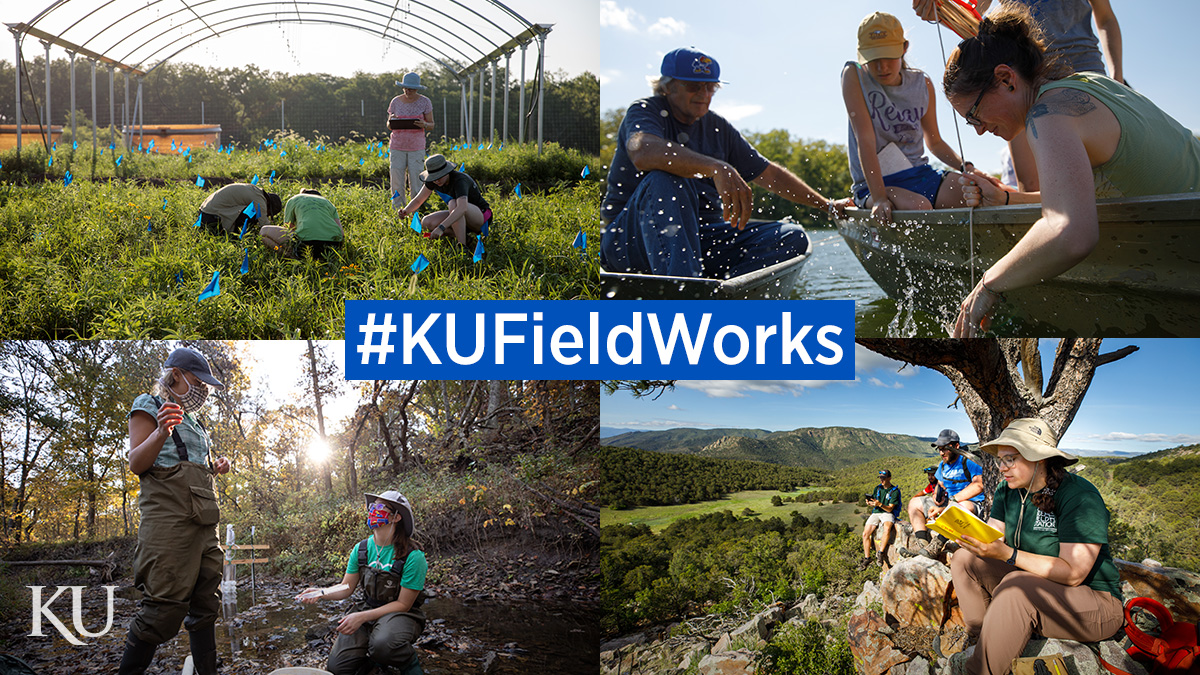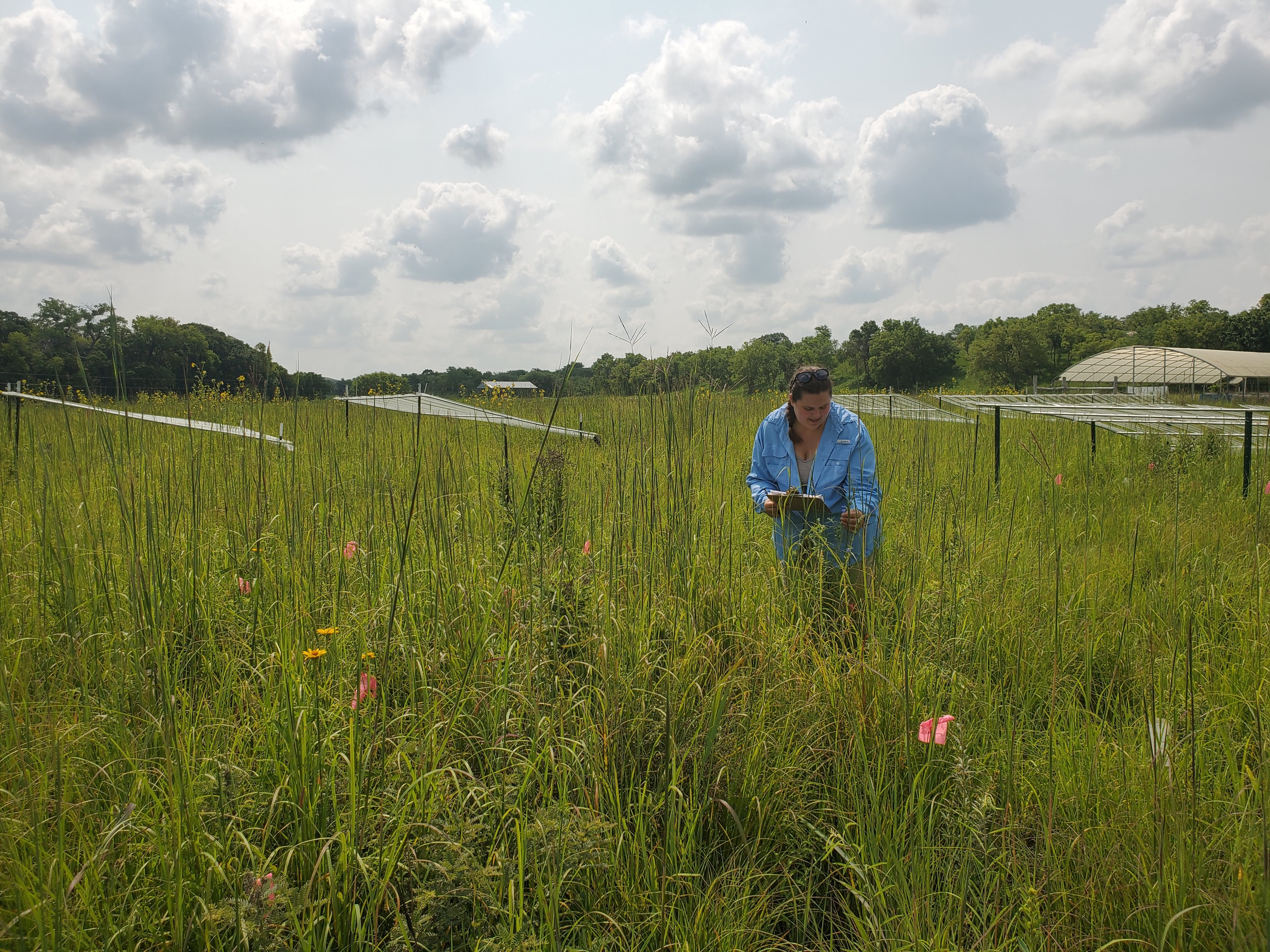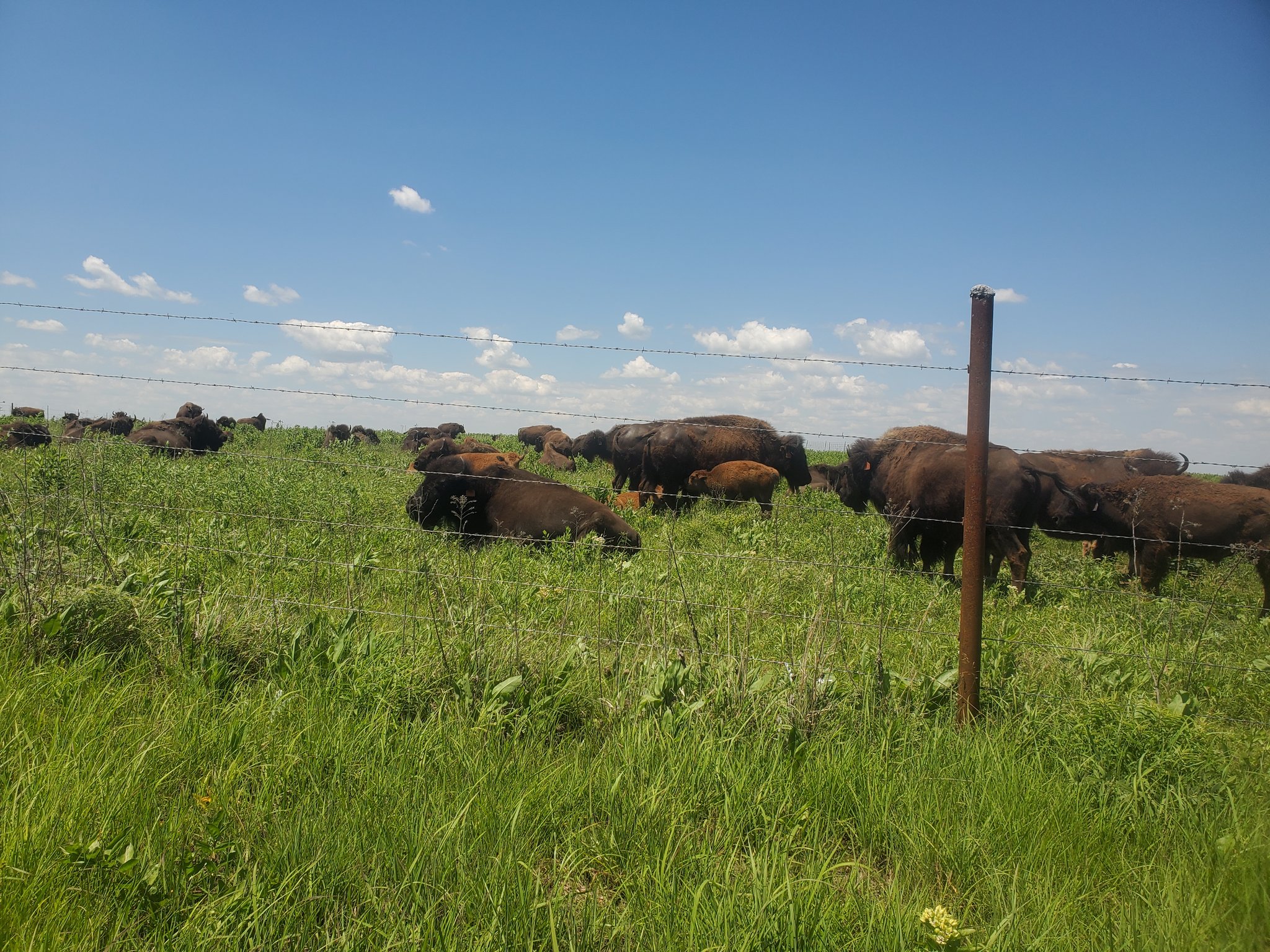#KUFieldWorks: Harvesting plant seeds and restoring native prairies in the Konza Prairie

University of Kansas researchers conduct fieldwork in prairies, rivers, streams and mountains. The #KUFieldWorks series follows researchers on their fieldwork adventures.
Editor’s note: Fieldwork provides invaluable insights about real-world environments and processes, expanding and reinforcing what researchers learn in classrooms, labs and collections. KU faculty, staff and students across a spectrum of disciplines are taking their inquiry directly to rivers, prairies, dig sites, glaciers, islands, burial grounds and more this summer. Through the #KUFieldWorks series, we'll join them on their adventures.
Q&A with ecology and evolutionary biology doctoral candidate Ashley Wojciechowski
Ashley Wojciechowski, doctoral candidate in ecology and evolutionary biology at the University of Kansas, explores the prairie in search of new plants as part of her fieldwork in the Konza Prairie Biological Station in Manhattan.
Her research primarily explores how soil heterogeneity affects plant community dynamics and ecosystem services, such as plant productivity and nutrient cycling, within the long-term restored prairie.
The site where she works in the Konza Prairie is considered a long-term restored prairie because the land was previously used for agriculture until researchers re-established the prairie in 1997. The site also has manipulated soil depth and nutrient availability to create soil variation.
What methods, approaches, experiments did you use to answer your research question?
Primarily, I take plant community surveys to measure plant richness and diversity, collect plant biomass to measure productivity, and test soil samples to measure soil moisture and nutrient availability. This year, I’m taking weekly plant observations to see if soil heterogeneity affects plant phenology, such as when a plant flowers.

Ashley Wojciechowski researches in the Konza Prairie.
Why does your study matter to your field or to society?
My research matters because almost all North American prairie has been converted into agricultural fields, which homogenizes the soil and can eventually lead to soil degradation. It’s essential to convert these degraded agricultural lands back into native prairies that can help increase plant diversity and reinstate ecosystem services.
What are some memorable (funny, scary, surprising) moments from the field?
I get to explore the areas of Konza with my lab mates that we typically do not visit. We search for plant seeds that my lab can harvest for future restoration projects. These areas often have different plants than the field sites we are used to seeing, and we often have to navigate around a herd of bison to get to the new plants.

A herd of bison gathers in the Konza Prairie.
When is fieldwork frustrating, challenging or overwhelming?
Fieldwork is often the most challenging when the weather is the most dangerous, such as when it’s hot and humid during the summer. I try my best not to have the weather get the best of me, so I take a lot of water breaks and seek indoor shelter if I’m getting too hot.
What do you enjoy most about being in the field?
I enjoy spending time outside with the prairie that I study. I’m often working inside on my computer analyzing data I have collected and working in the lab processing samples, so I really appreciate when I get to conduct fieldwork. It’s especially memorable in the fall when you are surrounded by grasses that are taller than you.